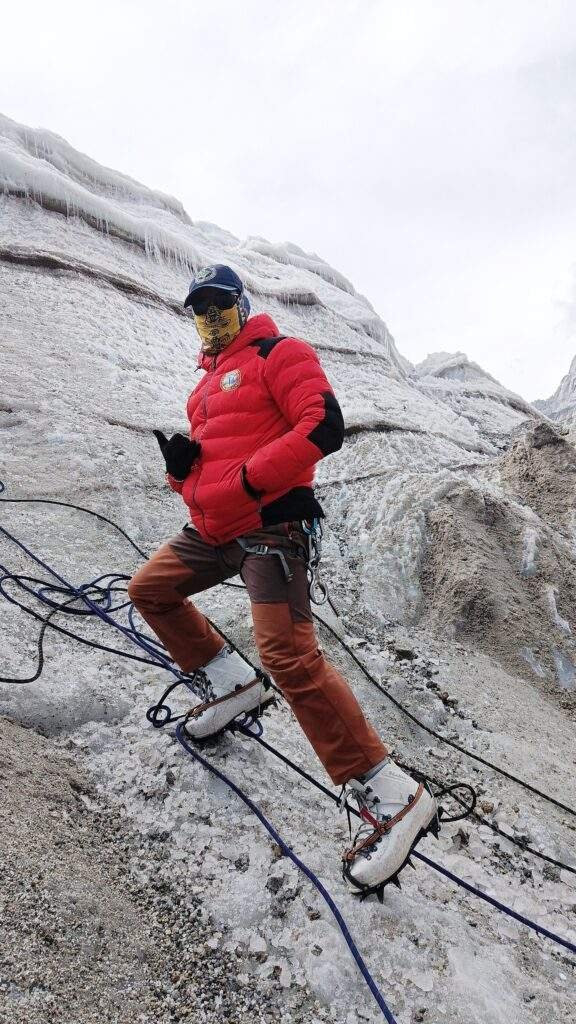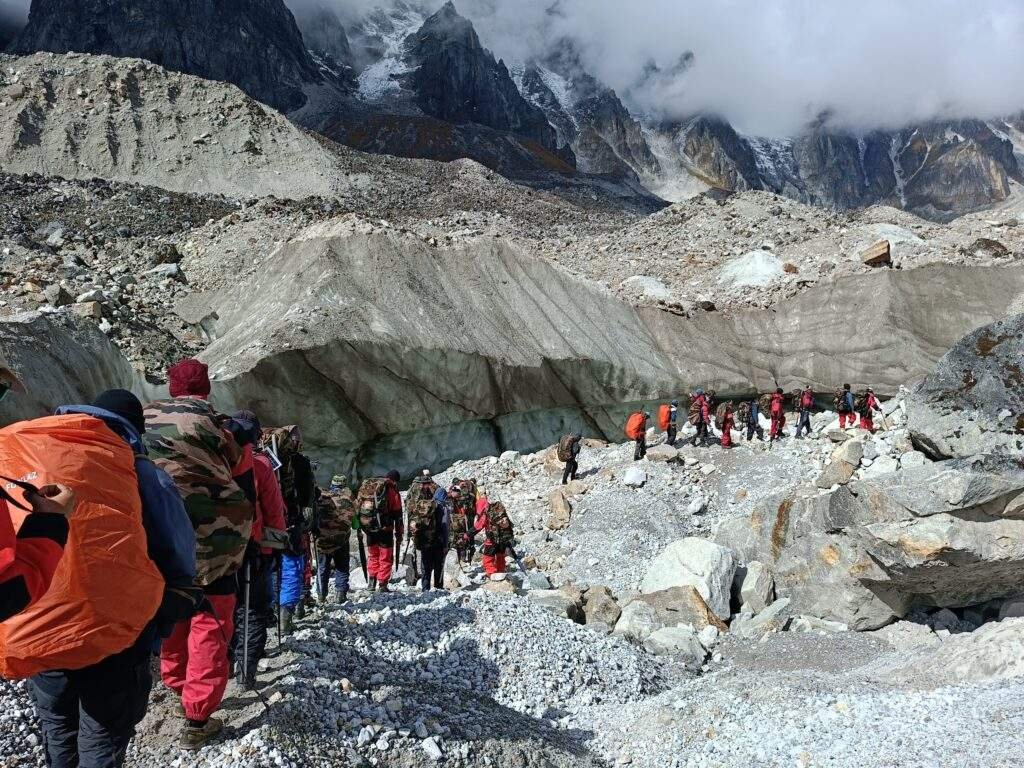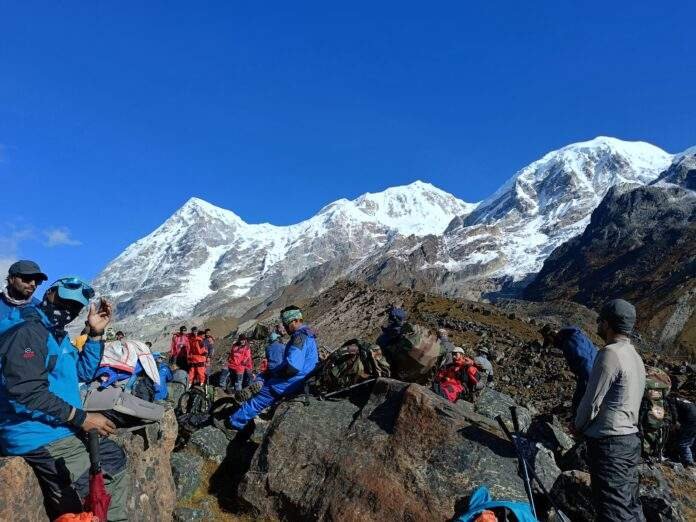Technically anybody could walk to the top of a mountain but this would not make them a mountaineer. Mountaineering can best be described as the ascent of any hill or mountain where the gradient and severity of the terrain requires some form of climbing and the sustained use of technical equipment.
Uncharted Quest of Mountaineering

In summer this equipment can include a helmet, rope, harness, carabiner and protective climbing equipment, and in winter will include the addition of crampons, an ice axe and protective ice-climbing equipment.
Mountaineering will inevitably involve periods of hill walking but what distinguishes these two activities is whether you need to use technical equipment in order to reach your objective: the summit!
How can you benefit from mountaineering?

There are numerous benefits to mountaineering. The most obvious benefits are improving both your physical fitness and cardiovascular fitness levels as well as reducing body fat through aerobic exercise. Some other less obvious or ‘less tangible’ benefits include greatly improving your own personal confidence and team working skills, which you will use in your work and personal life without even realising it!
Why would anyone want to do it?
Ask the majority of mountaineers why they pursue the sport and many would struggle to come up with a logical answer as to why they devote many hours, days and sometimes months to, basically, climbing a lump of rock! But mountains have always held a considerable fascination to people for many different reasons.
Mountains present a challenge to the adventurous, a release to the mystic and an arena for the sportsman. Different people are drawn to different activities for many reasons so what would draw someone to go mountaineering? Mountaineering is as much a spiritual pursuit as it is a physical one. Often you will experience personal joy and sadness, triumph and defeat but always developing that spirit to surmount the insurmountable. Few people wake up one day deciding to try mountaineering, more often it is a natural progression for either a hill walker or a rock climber to pursue their enjoyment further.
How much time does it take?
A mountaineering route could be as short as a few hours of climbing to reach a summit to then descend by walking down. This could be extended to day-long or multi-day ascents. At the other extreme, mountaineering routes can literally take months. But remember, the quality of a climb is not just determined by the altitude climbed, but by a number of other factors.
Many mountaineers become obsessed with ‘bagging’ some of the world’s 8,000m (5 mile) peaks (all located in the Himalayas). Some equally challenging but more enjoyable routes are to be found on many other peaks around the world. The sheer remoteness of some of the world’s mountain peaks means that no transportation can get you easily to your route meaning the only way there is weeks of trekking.
Once on a mountain, ascent at altitude means that time must also be taken to let the body adjust and acclimatise to working in a thinner atmosphere with less oxygen (any ascent over 5,000m or 1.86 miles can be considered high enough to cause altitude related problems).
What does mountaineering feel like?
Mountaineering often involves a whole spectrum of emotions and sometimes they can all collide at once! Words cannot describe the sense of freedom you get when you are ascending a mountain. It is truly a spiritual experience leaving you feeling really alive! You will find out a lot about yourself, some inner strengths you never even knew were there as well as developing new strengths.
On any ascent there will be good times and bad times too, that’s what makes the sport so personally challenging and character building. You may experience times when you ask yourself ‘Why am I doing this?’ But those moments pass to be replaced by great feelings of achievement that will stay with you forever.
Who can do mountaineering?
There are no real age barriers to entering into the world of mountaineering (anyone under 18 should clearly be supervised by a qualified adult). The only real barrier to mountaineering is the need for a moderate level of physical fitness but even this will develop as you progress in the sport and your routes become harder and more sustained.
Do you have to go on a course to participate in mountaineering?
Mountaineering is a pursuit that should never be undertaken without a good understanding of the many different aspects involved, ranging from map reading and navigation skills to rope work and understanding mountain weather. Friends often teach each other, passing their knowledge on, but the time and money invested in a course is more than well spent. There are six institutes recognised by the appex body of Indian Mountaineering Foundation who delivers courses that are very reasonably priced and you should definitely consider booking up with such reputable organisations offering expert advice.
There are numerous regional organizations/NGO’s/ Clubs which have emerged in the years that provide efficient pre schooling for mountaineering in regional basis which can be taken into due consideration as guide towards the field of mountaineering and adventure sports and for eg of such as in Assam the Assam Mountaineering Association is considered the pioneer of all which emerged in the year 1968 and have been working saliently and attained remarkable achievements for Assam and the field of Mountaineering and mountaineers as well.
North East India and its potential for mountaineering
The presence of the Eastern Himalayas and the sub-Himalayan ranges in North East India signifies the scope for adventure activities such as trekking and mountaineering.
The states – Sikkim and Arunachal Pradesh have some of the highest Himalayan peaks such as – Mt. Kanchenjunga (8586m) on the confluence border of Nepal and India border in Sikkim whereas Mt. Kangto (7090m) on the confluence border of China and India in Arunachal Pradesh, this majestic peak is well celebrated by the people of Assam as it could be seen standing tall with firm dignity and elegance from the district of Tezpur, Assam.
ALSO READ: OWAISI CRITICIZES ASSAM GOVT’S REPEAL OF MUSLIM MARRIAGES ACT











